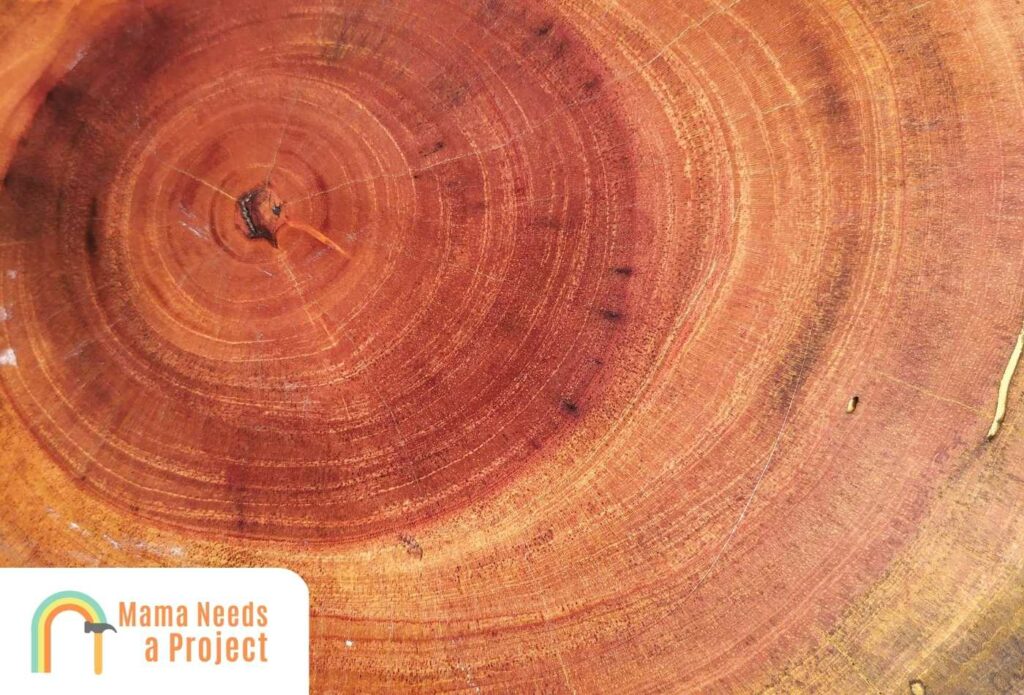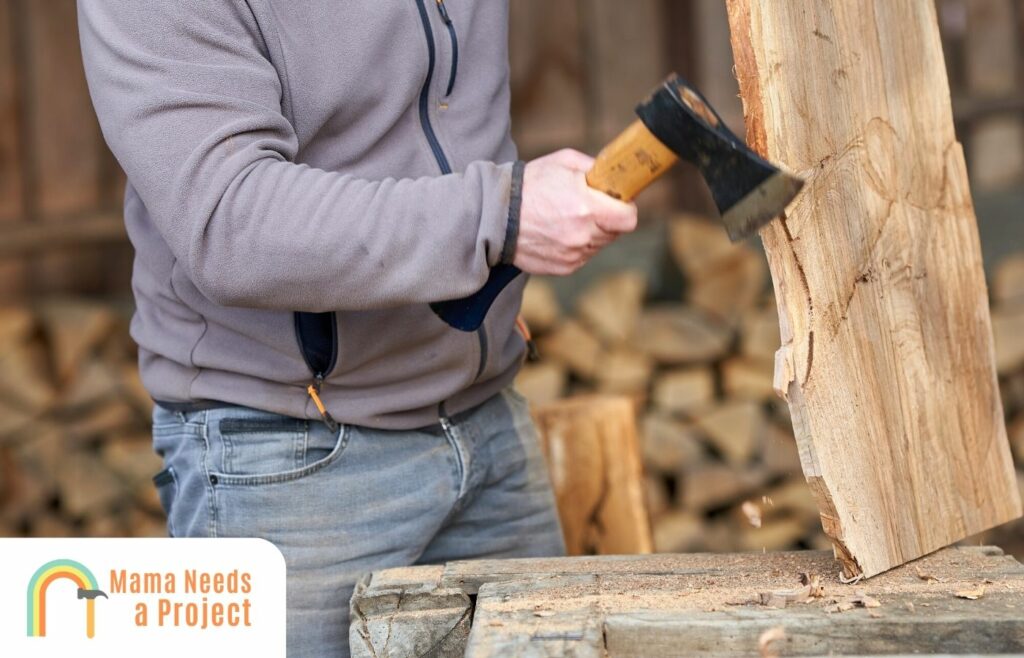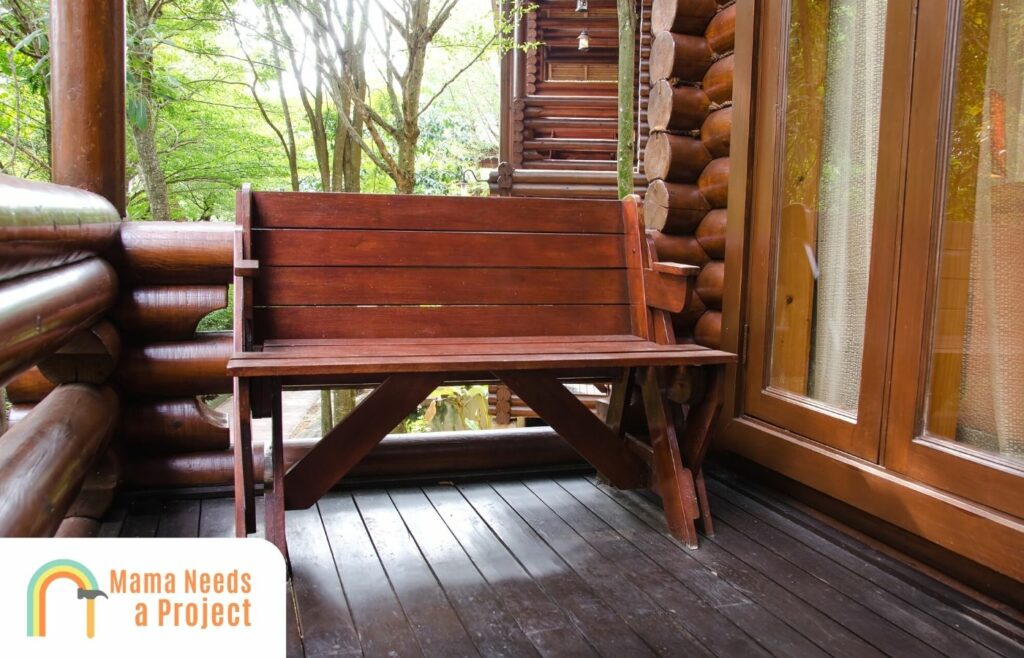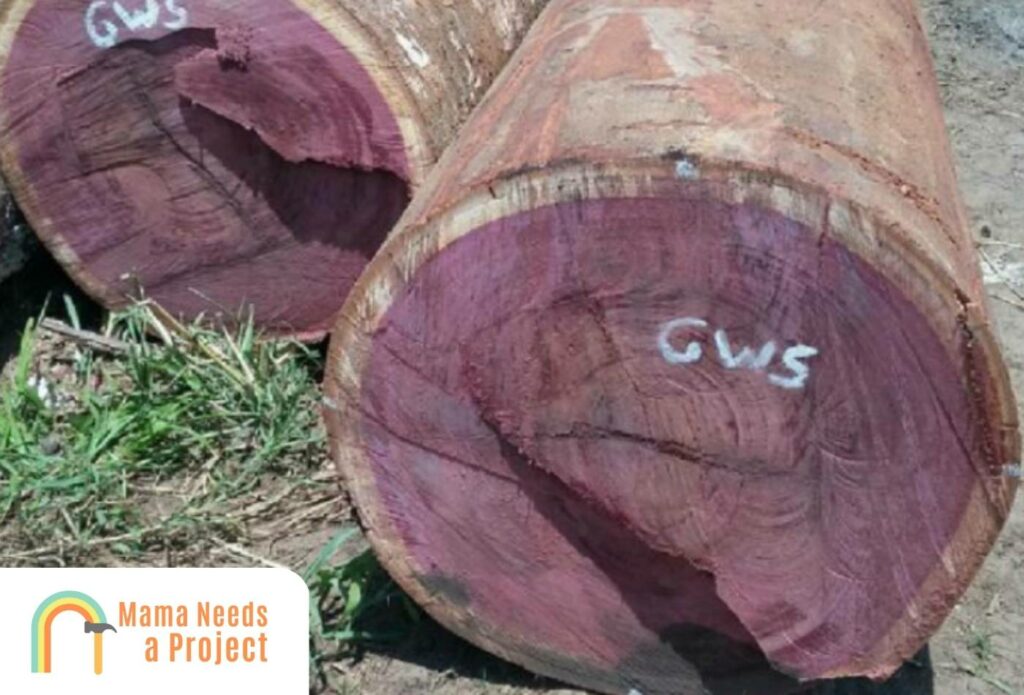9 Dark Wood Types (Pros & Cons)
Dark wood species are some of the most beautiful types of wood, as they’re aesthetically pleasing, durable, and valuable.
But there are many kinds of darker woods, and despite being similar, it’s the ways in which they’re different that lead people to choose some dark hardwoods over others.
In this article, I’ll explore nine of the most popular dark wood types so you can find the best dark wood for your project. Let’s get started!
- There are many dark wood species, including mahogany, ebony, walnut, cocobolo, African blackwood, wenge, teak, purpleheart, and sapele.
- Dark woods are more aesthetically pleasing, meaning they work well in a variety of decors. They also tend to be supportive and durable, so they can resist termites, water damage, etc.
Species of Dark Woods
1. Mahogany

One of the most popular dark woods, mahogany, has many different subspecies, and most mahogany trees grow throughout Central and South America.
Mahogany wood has a dark reddish-brown color, and it’s durable wood that can be used both indoors and outdoors which is one reason why people love it.
Like other dark woods, it’s often used to make furniture and instruments.
Despite being a hardwood, mahogany is relatively easy to work with. Plus, it isn’t as prone to warping as other woods, and it takes both glue and polish well.
Lastly, this wood isn’t as rare as some of the other dark woods on this list, but it’s not like it grows in abundance. This is main reason why mahogany is more expensive than other woods.
To be specific, as far as price goes, mahogany can go for $10 per board foot or more.
2. Ebony
Ebony wood comes from the Diospyros Ebenum tree, otherwise known as the ebony tree. This tree mainly goes in Tanzania and Mozambique, but they can be found throughout East Africa, Sri Lanka, and India.
The wood has a fruity aroma, and the tree it comes from produces both male and female flowers in the springtime.
Ebony is one of the darkest woods found in nature, and it’s an extremely durable wood that’s often used to make furniture and musical instruments.
Since this dark wood species is on the rarer side, it’s one of the most expensive woods, with a 4/4 piece of high-grade lumber costing $150.00 or more.
Lastly, shaping this wood with hand tools can be challenging, but if you’re good at this you can carve some really fantastic pieces.
3. Walnut

Another hardwood that’s naturally dense and dark, walnut grows throughout North America, Southern Europe, Asia, and the West Indies.
Walnut heartwood is usually a shade that resembles dark chocolate brown, whereas walnut sapwood is on the lighter side. Over time, all walnut wood gets lighter, and it can even turn a pale yellow after many years.
Despite being dense, this wood is relatively easy to work with, whether you’re using power tools or hand tools.
A transparent stain will accentuate walnut’s color and grain, and even before finishing it’s a pretty smooth hardwood.
Used to make cabinets, tables, chairs, desks, violins, guitars, drums, and many other furnishings and instruments, walnut wood usually costs $5-$10 per board foot.
4. Cocobolo
Cocobolo trees grow throughout Central America, and the wood they produce is both durable and breathtakingly beautiful.
Cocobolo heartwood is usually a rich orange-red color, though it’s sometimes brownish too. The sapwood is usually a lightish yellow.
Often featuring a unique grain pattern, cocobolo is used to make all kinds of furniture and many musical instruments.
It’s not only weather-resistant but insect-resistant as well, yet its value makes it unsuited for outdoor applications.
It’s not the best in terms of workability, so you may have some trouble when using hand or power tools on this wood.
Lastly, the price of cocobolo wood reflects its rarity, i.e it’s more expensive because it’s quite rare. To be specific, a 4/4 piece of regular-grade cocobolo lumber can cost $85-$95.
5. African Blackwood
African blackwood, otherwise known as Dalbergia melanoxylon, is found throughout southern African.
African blackwood is one of the more naturally dark woods, and it looks a lot like ebony (even though it’s not related to this species).
It’s a dense, naturally smooth hardwood that often has a straight and uniform grain, and often it’s hard to see the grain—unless it’s a brownish purple—because the wood is so dark.
One unique thing this wood is there’s an extremely thin layer of pale-yellow sapwood separating the heartwood from the rest of the sapwood.
Like cocobolo, African blackwood resists insects and elements well, but it’s not used outside because it’s an expensive wood.
Specifically, a 3-1/8″ x 3-1/8″ x 12-3/8″ board is $179. The high price is in large part due to the scarcity of this wood, and because it’s sought after for ornamental objects.
6. Wenge
Wenge is another naturally dark wood, and it comes from trees that grow throughout Central Africa.
There are usually numerous dark streaks in this wood, and these accentuate this wood’s deep chocolate tones.
It’s a dense and durable hardwood, one that resists warping, termites, and other damaging elements.
In terms of price, standard 2×2 is around $30, and it’s usually $27 per board foot.
This wood gives off a faint, bitter scent when being worked, and it’s relatively hard to work with hand tools and power tools.
It’s used to make furniture, veneers, instruments, and small specialty objects, and unlike other dark wood species this one actually gets lighter the more it’s exposed to UV rays (sunshine).
7. Teak

Teak is a light-brown hardwood that’s both strong and durable, and it comes from trees that grow throughout southern Asia.
Its heartwood is a reddish-brown color, while its sapwood is creamy white.
This dark hardwood is often used to construct fine furniture, and high-grade versions can cost upwards of $70 per board foot.
Freshly cut teak has a distinct smell that resembles leather, and it comes from the natural oils this wood secretes.
Have a teak wood project you need to clean? Here’s how to clean teak wood!
8. Purpleheart

Purpleheart is an extremely unique wood that’s found throughout Mexico and Brazil.
Known for its grain patterns and purple color, this wood is used to make high-end furniture. Darker steaks accentuate its rich color, and it’s one of the best dark woods in terms of overall durability.
And as far as price goes, it’s not going to break the bank: a board foot is usually $15 or so.
9. Sapele
Sapele is usually a dark reddish-brown, and it often has unique grain patterns.
It’s not as durable as other woods, so it’ll be more at risk in the face of an insect attack.
Sapele can be hard to work with because of its unique grain patterns, and it can become discolored after making contact with iron.
It also blunts cutters more than other woods, but it accepts glues and finishes well.
Finally, it smells like cedar when being worked, and its price is relatively low: just $15 per board foot.
Advantages of Dark Wood Types
Accentuated Grain
Many dark woods have an accentuated grain, and such a grain makes a dark wood more visually appealing, whether we’re talking about walnut, sapele, mahogany, cocobolo.
Some dark woods have a straight, uniform grain while others have an irregular grain or one that’s interlocking.
But an unfortunate truth is that many pieces with exceptionally attractive grains are hard to work.
Finally, not all dark woods have an accentuating grain. Take African blackwood, for example. Yes, it has a grain, but you can barely see it because the wood is a deep dark brown overall.
Absorbs Light
Dark woods also absorb light, and for this reason they don’t fade when exposed to UV rays.
That means if you have a piece of deep-brown wood furniture that’s constantly being exposed to sunlight, you can expect it to stay that shade for a long time.
This isn’t the case for all dark woods, however. That said, as a general rule, the darker the wood, the more UV resistance it has.
Durability
Since most dark woods are hardwoods, they’re durable and supportive.
Therefore, they can resist the elements as well as insects and other creatures that feast on wood.
In fact, the durability of dark wood is one of the main reasons why this wood is more expensive than lighter woods.
Think about it: You could have a dining room table that’s not only beautiful but durable because it’s made of aesthetically pleasing dark wood, like cocobolo or mahogany.
Value
Dark woods with even darker streakers tend to be more expensive than other kinds of wood.
Also, the woods that are often used to make musical instruments tend to fetch a pretty penny, just like pink, purple, and light reddish-brown woods.
Disadvantages of Dark Wood Types
Expensive
Most dark woods are expensive because they come from trees that don’t grow in large numbers.
Therefore, you could spend a lot of money just to make a simple piece of furniture, especially if the wood used is African blackwood or cocobolo.
And since it’s so expensive, you have to be extra careful when working, as even a simple mistake can literally cost you hundreds.
Shows Dirt and Damage
Wood that’s dark brown or dark red will display dents, dirt, dust, pet hair, and scratches more than lighter woods.
So if you have dark hardwood flooring, like an ebony species or something similar, you’ll need to clean and polish the floor more often.
It’s also wise to coat any darker wood surface that’s at risk of being damaged with a transparent, durable finish like polyurethane.
Harder To Work
Since they often have irregular or interlocked grains, dark woods tend to be harder to work, whether you’re using hand tools or power tools.
And if you try to work a dense, dark wood with tools that aren’t designed to handle it, at best you may wind up with some much duller tools—at worst the tools will be broken.
Final Thoughts
To recap, some of the best dark woods are mahogany, ebony, walnut, cocobolo, African blackwood, wenge, teak, purpleheart, and sapele.
Dark woods are ideal for a variety of woodworking projects, since they’re durable, visually appealing, valuable, and versatile.
Dark wood flooring and furniture can be some of the most beautiful finishes for your home and they can last a lifetime.

